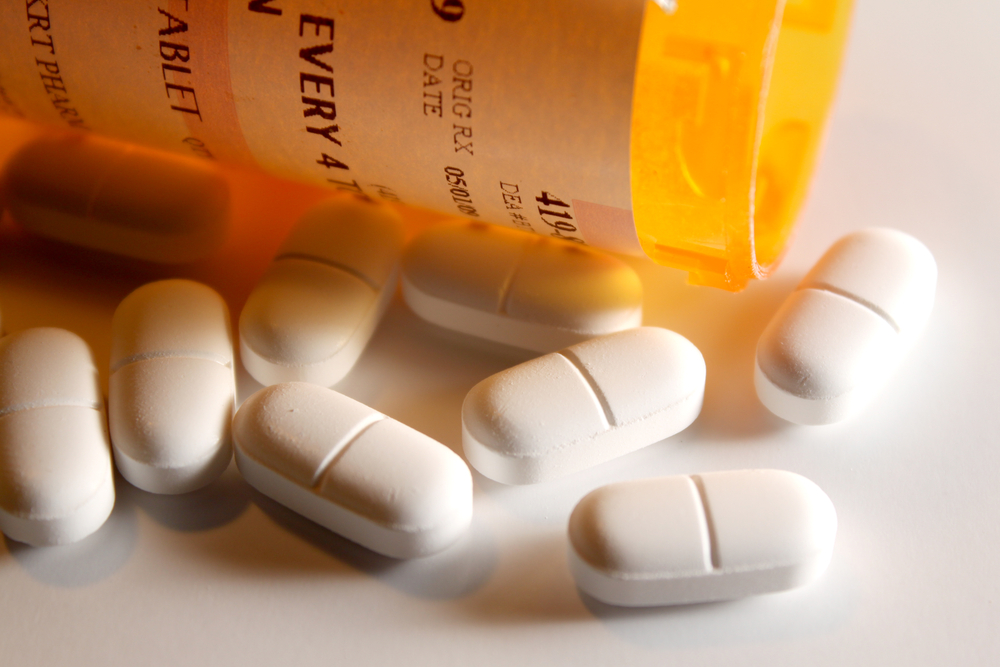Understanding Vicodin Addiction – Facts & Figures
Written by Melissa Carmona
& Medically Reviewed by Rachel Loukas, PharmD
Medically Reviewed
Up to Date
Last Updated - 6/17/2022
View our editorial policy
While Vicodin can be very effective for pain management, it can also be extremely addictive. Having to endure Vicodin addiction alone can be quite scary. As many of us employed by The Recovery Village Ridgefield are in recovery ourselves, we understand this. It’s all too easy to feel isolated and alone, trapped inside the pain you feel.
Maybe your physician initially prescribed you Vicodin after an injury, but you started taking more than prescribed, and this led to an addiction. Maybe you started taking Vicodin to get high. It doesn’t matter how your addiction began. What matters is that you are not alone. We are ready to listen, provide guidance and support you on your path to recovery.
Why Vicodin is Addictive
Vicodin contains a combination of hydrocodone and acetaminophen. Hydrocodone is an opioid pain reliever that can be highly addictive. While some opioids are legal when prescribed by a doctor, others are not legally available, like heroin. There is a misconception that if a drug is prescribed, it must be safer than illegal substances. However, all opioids have the potential to become addictive.
When you take hydrocodone or Vicodin, the drug affects your brain’s reward system. With continued use, your brain can start to perceive hydrocodone as a life-sustaining substance. As you take more Vicodin, your body craves more.
Those who suffer from Vicodin addiction have brain circuits that have been rewired to seek and crave Vicodin even when use is causing obvious harm. During Vicodin addiction treatment, a medical team works together to help return your brain to a healthy state and address the psychological and mental aspects of your addiction.
How much Vicodin is too much?
Taking more Vicodin than your doctor prescribes is considered drug misuse and could lead to addiction over time. The acetaminophen in Vicodin can also cause liver damage in high doses, making it even more important to take the medication only as directed.
How long does it take to get addicted to Vicodin?
While this can vary from person to person, your body can become physically dependent on opioids like Vicodin after regular use for more than a few days. Additionally, data from the CDC shows the likelihood of using an opioid long-term dramatically increases after only five days of using a new opioid prescription.
How to help someone with an opioid addiction?
Opioid addiction is a disease that requires detox and treatment from trained professionals. Helping someone reach out and find a professional treatment facility is the first step to recovery.
Signs & Symptoms of Vicodin Addiction
There are many signs and symptoms of Vicodin addiction to be on the lookout for. Some of these include:
- Continued Vicodin use in spite of negative consequences
- Visiting multiple physicians or pharmacies for extra Vicodin
- Lying to family or friends about Vicodin use
- Needing more and more Vicodin to get the same high
- Vicodin use causing the neglect of relationships and responsibilities
- Stealing pills or stealing money to buy pills
- Taking unnecessary risks to get more Vicodin
- Inability to feel normal without Vicodin
Continue reading at Vicodin Side Effects →
Vicodin Withdrawal Symptoms
Vicodin withdrawal can be different for each person. Typically, the worst of Vicodin withdrawal symptoms will end within 1–2 weeks. However, it may be longer for some individuals. These symptoms can include:
- Irritability
- Mood swings
- Anxiety
- Appetite changes
- Tremors
- Nausea and vomiting
- Diarrhea
- Sweating
- Rapid breathing
- Muscle aches
- Sleep disturbances
- Flu-like symptoms
- Runny nose
When someone tries to stop an opioid medication like Vicodin cold turkey without medical assistance, withdrawal symptoms can be severe. The process is safer and more comfortable with medical detox. Inpatient treatment is recommended after detox to help prevent relapses. While detox does involve removing Vicodin from the body, the psychological, mental, emotional and spiritual aspects of addiction will be addressed in a full treatment program.
Continue reading at Vicodin Detox →
Vicodin Addiction Treatment
The good news is that substance use disorder can be managed with the right help. Because of the withdrawal symptoms, many people are afraid to pursue Vicodin treatment. At The Recovery Village Ridgefield, we know how to help you detox from this substance safely. After detox, you can pursue a full continuum of care that’s personalized to meet your needs. This may include inpatient and outpatient treatment to help you fully adjust back into your day-to-day life.
At our facility, we offer holistic treatment that includes evidence-based practices like therapy and medication management, traditional 12-step work and recreational therapies such as sports or art therapy. Our facility is located less than three hours from Seattle, Washington and 30 minutes from Portland, Oregon, among the serenity of the Cascade Mountains. We are staffed with addiction specialists and healthcare professionals who are dedicated to helping you find your own pathway to recovery.
We understand it takes a lot of courage to reach out and ask for help. If you are considering treatment for Vicodin addiction, call us today to have a confidential conversation with one of our compassionate addiction specialists.
Sources
- U.S. Pharmacist. “Introduction of newly reformulated Vicodin®, Vicodin ES®, and Vicodin HP® (hydrocodone bitartrate and acetaminophen tablets, USP).” October 2012. Accessed December 10, 2021.
- Volkow, Nora D.; Michaelides, Michael; Baler, Ruben. “The Neuroscience of Drug Reward and Addiction.” Physiological Reviews, September 11, 2019. Accessed December 10, 2021.
- Adinof, Bryon. “Neurobiologic Processes in Drug Reward and Addiction.” Harvard Review of Psychiatry, July 16, 2007. Accessed December 10, 2021.
- Agrawai, Suneil; Khazaeni, Babak. “Acetaminophen Toxicity.” StatPearls, July 18, 2021. Accessed December 10, 2021.
- U.S. Department of Health and Human Services. “HHS Guide for Clinicians on the Appropriate Dosage Reduction or Discontinuation of Long-Term Opioid Analgesics.” October 2019. Accessed December 10, 2021.
- Shah, Anuj; Hayes, Corey J.; Martin, Bradley C. “Characteristics of Initial Prescription Episodes and Likelihood of Long-Term Opioid Use — United States, 2006–2015.” Centers for Disease Control and Prevention, March 17, 2017. Accessed December 11, 2021.
- National Institute on Drug Abuse. “The Science of Drug Use and Addiction: The Basics.” July 2, 2018. Accessed December 11, 2021.
- Providers Clinical Support System. “Opioid Withdrawal.” October 21, 2021. Accessed December 12, 2021.
View Sources
- U.S. Pharmacist. “Introduction of newly reformulated Vicodin®, Vicodin ES®, and Vicodin HP® (hydrocodone bitartrate and acetaminophen tablets, USP).” October 2012. Accessed December 10, 2021.
- Volkow, Nora D.; Michaelides, Michael; Baler, Ruben. “The Neuroscience of Drug Reward and Addiction.” Physiological Reviews, September 11, 2019. Accessed December 10, 2021.
- Adinof, Bryon. “Neurobiologic Processes in Drug Reward and Addiction.” Harvard Review of Psychiatry, July 16, 2007. Accessed December 10, 2021.
- Agrawai, Suneil; Khazaeni, Babak. “Acetaminophen Toxicity.” StatPearls, July 18, 2021. Accessed December 10, 2021.
- U.S. Department of Health and Human Services. “HHS Guide for Clinicians on the Appropriate Dosage Reduction or Discontinuation of Long-Term Opioid Analgesics.” October 2019. Accessed December 10, 2021.
- Shah, Anuj; Hayes, Corey J.; Martin, Bradley C. “Characteristics of Initial Prescription Episodes and Likelihood of Long-Term Opioid Use — United States, 2006–2015.” Centers for Disease Control and Prevention, March 17, 2017. Accessed December 11, 2021.
- National Institute on Drug Abuse. “The Science of Drug Use and Addiction: The Basics.” July 2, 2018. Accessed December 11, 2021.
- Providers Clinical Support System. “Opioid Withdrawal.” October 21, 2021. Accessed December 12, 2021.
Authorship






